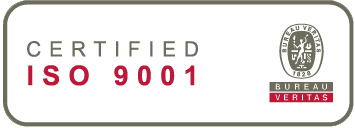PRK
PRK, or Photorefractive Keratectomy, is a surface surgical technique widely used for the low correction of myopia and astigmatism.Considered the first generation of laser vision correction, PRK procedure is characterized by surface ablation surgery. Your Rutnin-Gimbel ophthalmologist first dissolves a thin layer of the cornea with an alcohol solution, and removes it with a manual instrument. The underneath surface of the cornea is then modified with an excimer laser to correct refractive powers. The whole procedure is performed under topical or local anesthesia and is relatively painless. The corneal first layer begins to regenerate in 5-7 days after surgery
Even if more recent techniques like Femto LASIK or ReLEx SMILE offer additional benefits, PRK remains very popular as a very economic technique.

Detailed Steps of PRK Surgery

Step 1. : Layer preparation
A diluted alcohol solution is applied to the cornea to dissolve the epithelial layer.

Step 2. : Layer removal
The epithelial layer is then removed or moved to the side using a manual instrument.

Step 3. : Corneal sculpting
An excimer laser is used to remove the corneal tissue point by point within a few seconds, correcting the visual defect.

Step 4. : Eye protection
Finally, a protective bandage lens is placed over the eye until the epithelium grows back within a 5-7 days.
Who can be Candidate?

General Requirements
Rutnin-Gimbel ophthalmologists strictly apply Rutnin’s ethics in eye surgery and make sure first that any patient meets following general conditions, whatever the treatment could be:
- 18 year old minimum
- In good health overall
- Good eyes condition (no eye disease)
- No pregnancy, no breast feeding
Candidates for PRK treatment
If the patient meets all prerequisite conditions, PRK can be proposed as treatment for:
- Myopia, for refraction up to -8 D,(including astigmatism up to 6 D)
- Hyperopia, for refraction up to +3 D,(including astigmatism up to 6 D)
Rutnin-Gimbel ophthalmologist will determine during the thorough pre-operative examination if the eye conditions enable and require a PRK treatment.





